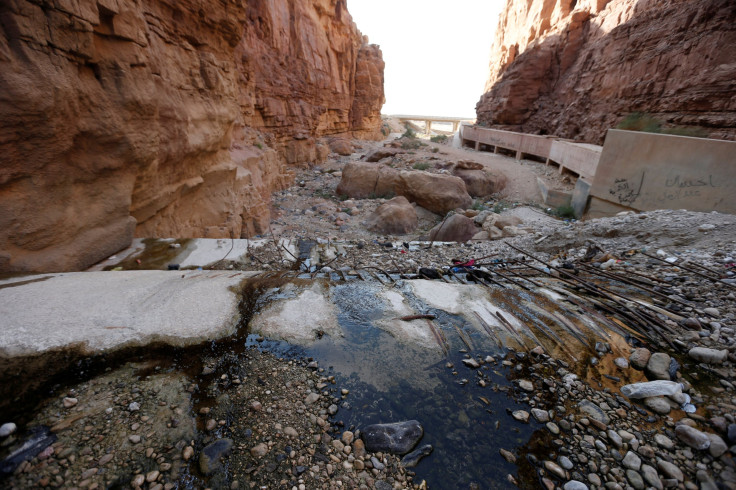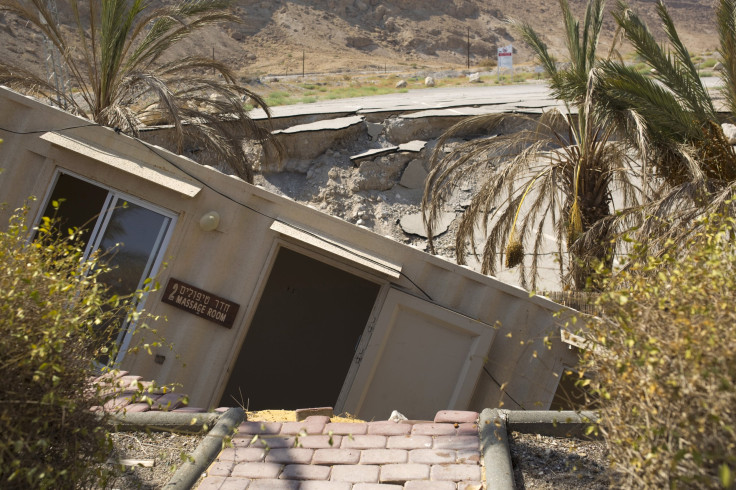Why Is Dead Sea Dying? World’s Lowest Point Drying Out At Alarming Rate

It is the lowest point on the surface of Earth, and with the exception of underwater brine pools, is among the saltiest water bodies on the planet. And it is flocked to by tourists, both for pictures of them effortlessly floating in the highly saline water and the healing properties its mud is supposed to have. But all that could become a thing of the past since the Dead Sea is dying.
Actually a hypersaline lake, and not really a sea at all, Dead Sea is 1,407 feet below sea level, ranks fifth in the world on the salinity scale and at 997 feet, is the deepest water body of its kind. However, it is losing water at the rate of over 3 feet a year, which means it is not just getting shallower but also saltier. The high salinity already deprives the lake of any marine life within it, but if the current trend continues, the lake may disappear altogether.

While not linked to climate change, the drying up of the lake — bordered by Israel, Jordan and the West Bank — is a byproduct of human activity. According to EcoPeace Middle East, an environmental organization: “Far and away the biggest cause of the rapid disappearance of the Dead Sea is the lack of water coming into it from its traditional sources: the Jordan River and various side wadis (tributaries). Construction of dams, storage reservoirs, and pipelines has greatly reduced water inflows to the Dead Sea. While much of this water is being used by the Israelis, Jordanians, and Palestinians for basic domestic consumption, most goes towards highly subsidized and inefficient agriculture.”
The organization also listed other human activity, including non-sustainable tourism, mineral extraction and other development works in the region as factors responsible for the falling level of the lake. It predicts that at its current rate, the Dead Sea shoreline will drop by another 60 feet or so by 2020. About 2,000 sink holes have also come up on the western shores of the lake.

Israel and Jordan signed an agreement last year to spend $900 million in attempts to stabilize the water level of the Dead Sea. The plan involves building a canal from the Red Sea to the Dead Sea, which will supply both countries in the arid region with water, as well as pump about 300 million cubic meters of water into the depleting water body every year, CNN reported.
© Copyright IBTimes 2024. All rights reserved.











